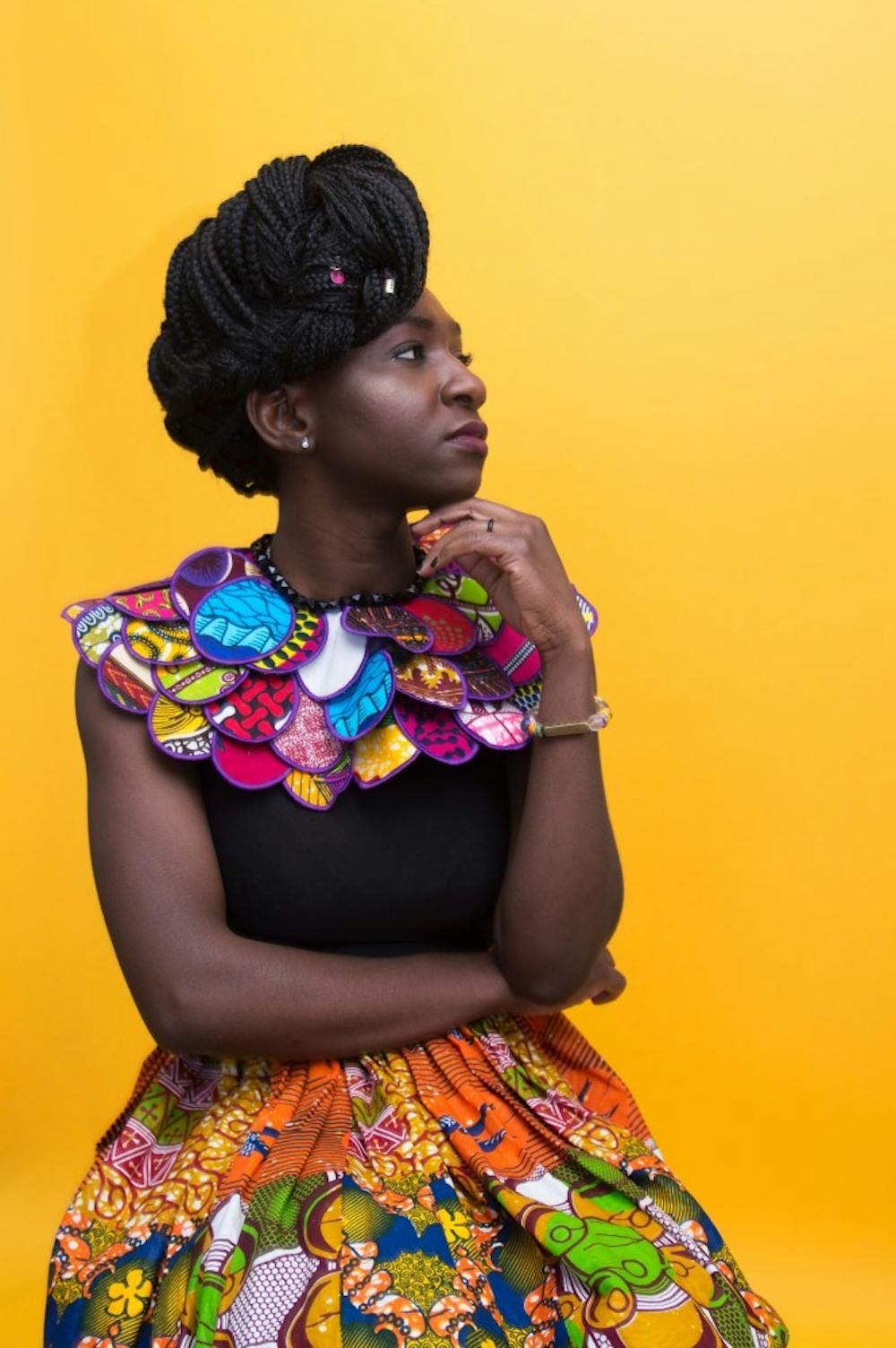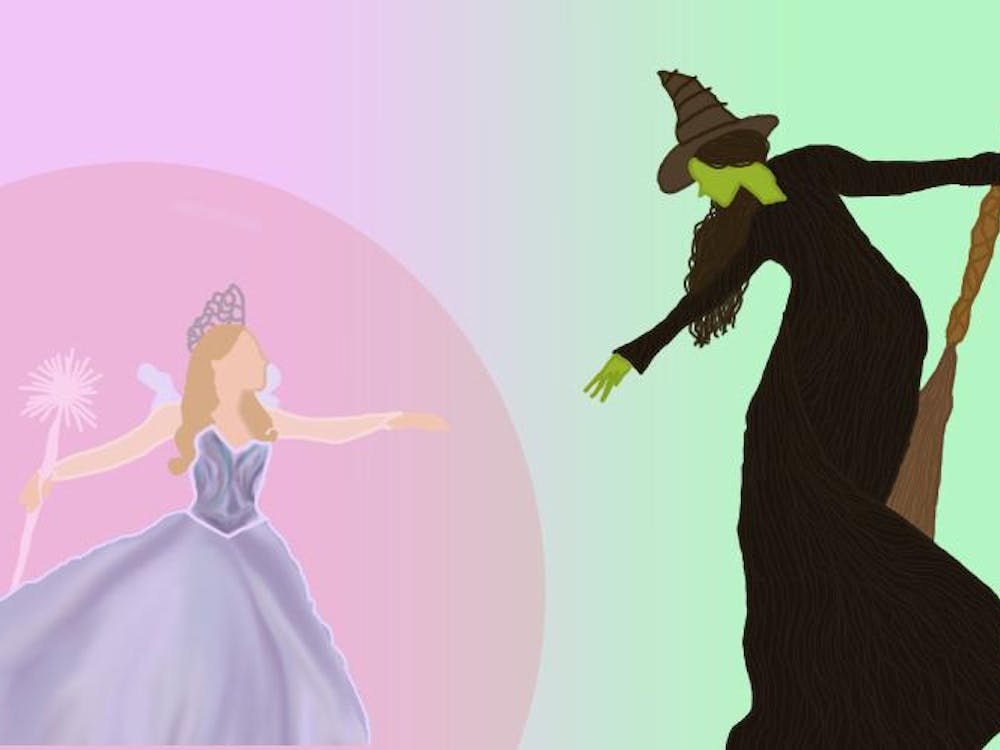Fourth-year Grace Patrice Anyetei-Anum stood before her seven photographs grinning ear to ear, perhaps stopping to pause between loud, meaningful moments of congratulations and embrace from friends, family and a few of the subjects of her portraits.
The thesis exhibition — “Women of Africa” — was displayed in the bottom floor of Ruffin Hall, with her photographs visible while descending the stairway. The eye-catching tributes of glowing women were displayed against a simple, bright, complementary color, which popped the culturally traditional clothing worn by the subjects. The artist wore a vivid yellow dress to this closing, her radiance as bold as the works. Even though every single person who approached Anyetei-Anum sung exceptional praises of the vivid art lined on the wall, she spoke of the entire artistic process as being incredibly humbling and educational.
“I’m just really happy and super humbled,” Anyetei-Anum said. “I have learned to be super deliberate, letting the process move me though. I started with a thought of representing African women and I didn’t know where it was gonna go … I really learned a lot from my friends in the end and I got to learn a lot more about their culture. I’m from Africa, but I’m from the country of Ghana, I don’t know a lot about the practices and traditions of other countries.”
It’s hard to pinpoint the most exceptional part of this exhibit. Since the artist herself learned about the significance of their country of origin to the subject, there was a guaranteed level of elevating education behind each work of art. This was Anyetei-Anum’s project-blossoming intention — to inform herself and her viewers of the wide diversity in the continent of Africa and undo the rhetoric behind speaking about the 54 different countries with over 1,500 different languages as one place.
Anyetei-Anum’s artist statement also includes the story that inspired her final product. While flying home to visit her family, she heard the flight attendant list Africa alongside singular countries like China and India. Americans receive a nationalistic education that shapes this kind of ignorance. Stemming from as early as elementary school, children in the U.S. are taught the distinction between countries in Europe, the stark difference between France and Italy, but there is typically never a required clarification on the countries of Africa. Here at the University for example, students are able to understand the contrasting characteristics of people from different states like New Jersey and Virginia or California and Kansas. Education starts somewhere, and artistic expression can be a tangible source for this necessity.
Because Anyetei-Anum photographed women from different countries in Africa she met at the University, the subjects’ intense feelings of recognition and appreciation were seen up close and personal at the exhibition. For one of the Anyetei-Anum subjects, third-year College student Samah Nour, the invitingly relaxed photography session brought her a comforting reminder of her heritage.
“I was born and raised in Saudi Arabia, so I didn’t get to live in Sudan for that long,” Nour said. “Oh my god, it brought me back. It made me feel home. A home I haven’t felt in forever. I kind of lost that identity along the way, and this really helped me rediscover it.”
Her photograph shows her holding one red nail polished hand to the chest of a red, jeweled dress. Only her red lips are seen underneath a scarf that covers her hair and eyes, and a bright blue background brings the truthful depiction of this young woman out. Nour spoke of the empowering self affirmation she gained from wearing her clothes representational of her culture to Anyetei-Anum’s studio.
“It definitely made me feel more beautiful and more powerful. It’s a weird feeling.”
Clothing served as a way Anyetei-Anum made a clear distinction between being African and being African-American. In her artist’s statement, Anyetei-Anum said, “Although we are all black, differences do exist in our various cultures.”
Anyetei-Anums’s ability to allow women to embrace their culture to morph into a sense of belonging through her photography is a standout performance of not simply art but of kindness as well. The entire mood of the closing reception drifted away from just another subtle, quietly appraising exhibit typical of the art world to a full of ecstaticism celebration. A celebration of Anyetei-Anum, her expressive photography and of the beautiful Women of Africa.







